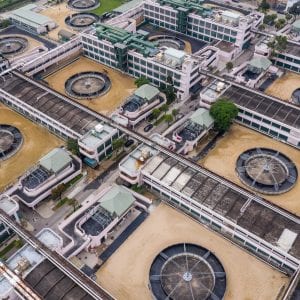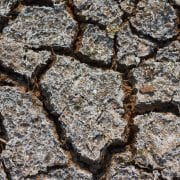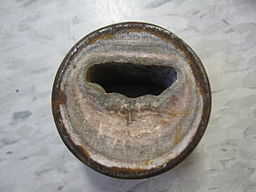 Slurries, sludges and semi-solid waste fluids tend to have quite challenging handling behaviour due to their inhomogeneity and non-Newtonian nature. The combination of unpredictable composition, large and irregular sized particles of varying consistency, hardness, concentrations and distributions, and overall unpleasantness of working with foul looking and smelling amorphous blobs, further adds to the pain and difficulty of working with them. Designing process equipment to transport these materials requires the characterisation of viscosity across a range of shear conditions and yield stress (where appropriate).
Slurries, sludges and semi-solid waste fluids tend to have quite challenging handling behaviour due to their inhomogeneity and non-Newtonian nature. The combination of unpredictable composition, large and irregular sized particles of varying consistency, hardness, concentrations and distributions, and overall unpleasantness of working with foul looking and smelling amorphous blobs, further adds to the pain and difficulty of working with them. Designing process equipment to transport these materials requires the characterisation of viscosity across a range of shear conditions and yield stress (where appropriate).
Depending on your goals, and material handling steps – having a full viscosity curve and yield stress data can help identify process limits and a ‘window’ of acceptable process parameters. In some cases, understanding how the rheology is affected by temperature is of vital importance, particularly when working with thermal process equipment such as dryers, coolers, heat exchangers or kilns. Ineffective heating or cooling is a common problem when working with slurries, sludges and semi-solid waste fluids, so characterising properties such as heat conductivity or specific heat capacity can go a long way in ensuring the process works efficiently as intended.
If you don’t have the right equipment to characterise your slurry, sludge or semi-solid waste, are unfamiliar with the appropriate methods to gather data or simply need advice and/or a friendly face to discuss ideas with, please feel welcome to get in touch to ask about what we can do to help you.
Viscosity of sludges, slurries and semi-solids
Many sludges and slurries may settle rapidly before reasonable characterisations of their viscosity can be made – this may necessitate constant agitation of the material which in itself may change the properties due to particle attrition, or provide false measurements due to inertia from the fluid. To understand the viscosity of a non-Newtonian material, you must be confident that your viscosity reading corresponds to a defined shear rate. Dip-in rod and disc attachments for rotational viscometers are best used on Newtonian materials since it is not feasible to calculate a defined shear rate when used with non-Newtonian materials. Concentric cylinders are the preferred attachment of choice when characterising the viscosity of sludges, slurries and semi-solids, but in situations where the particle size is too large, or where the material simply slides along the surface of the containing vessel, then vaned spindles, and serrated jackets are often used instead. Viscosity data collected using vanes and serrated jackets need further treatment to correct for some of the errors introduced in using a more complex geometry.

When is yield stress relevant?

Non-Newtonian materials have complex flow behaviour due to intermolecular and interparticle interactions. Electrostatic interactions, particle collisions and polymer entanglement are all common causes for complex flow behaviour at the nanoscale as well as the formation of elastic structure in predominantly fluid materials. At the microscale, particle size, shape and volume fraction can also have visible and considerable contributions to complex flow behaviour.
Under at-rest conditions, a non-Newtonian material can exhibit a high viscosity or form a sufficiently elastic structure which must be destroyed before significant flow can occur. The yield stress of a material then, is broadly defined as the stress which causes significant flow. While it is helpful to perceive yield stress as a single value, in reality yielding behaviour covers a range of stresses – the method used to calculate yield stress can have a substantial impact on its final value and should influence how you account for this in your final design.
Yield stress is also commonly used to understand suspension stability, for fluid dominant behaviour materials – depending on your unit process you may want to encourage sedimentation and separation, or agitate the material to keep homogeneity.
Temperature Dependence and Thermal Transfer Properties

Generally, increases in temperature cause a reduction in viscosity but this relationship depends on the composition of the material being observed. Many lipids, fats and oils undergo a phase change within environmentally ambient temperatures. Proteins can change size and shape or completely denature due to temperature, salts, pH or mechanical agitation – on the one hand this may make some products easier to break down, but on the other it may inactivate enzymes necessary for digestion.
Almost all sludges, slurries and semi-solid wastewater display non-Newtonian shear thinning behaviour. The degree of shear thinning behaviour can also change with temperature necessitating full viscosity shear rate sweeps at different temperatures. Temperature regulation for bacteria is vital for control of the anaerobic digestion process – too high or too low and the bacteria can die. Managing the temperature of the digestate against environmental conditions is a costly and challenging venture.
Given the scale that wastewater treatment occurs, temperature gradients in bulk material can pose a serious problem. It is therefore vital to be able to measure the thermal diffusivity of sludges, slurries and semi-solid wastewater. Thermal diffusivity can be calculated from the thermal conductivity (a measure of a material’s ability to conduct heat) and the volumetric heat capacity (the density of the material multiplied by the specific heat capacity of the material). Thermal diffusivity is a measure of a material’s ability to conduct heat internally across a temperature gradient. Low values need to be managed accordingly, particularly when environmental conditions may accelerate changes in temperature faster than can be conducted through the bulk material.
Our lab has a variety of capabilities and techniques at our disposal that makes characterising sludges, slurries and semi-solid wastewater a breeze. Situated in the idyllic countryside of Hampshire, our completely renovated farmyard building is now more well equipped than ever to deal with stinky and smelly effluents. If you would like to discuss how we can provide testing, training or consulting services to help you understand the flow behaviour of your materials, then please feel welcome to call us or arrange a visit.
